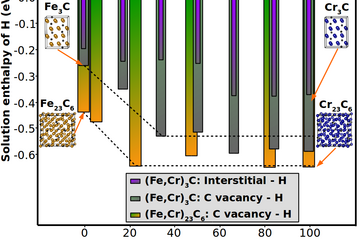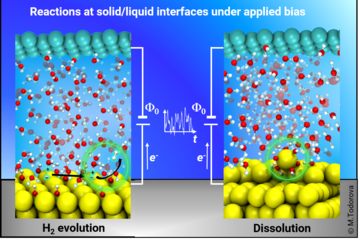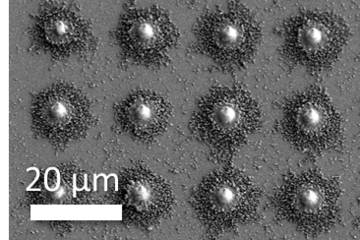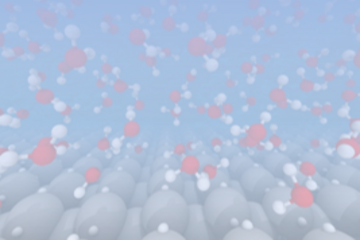All genres
181.
Talk
Influence of long-range C–C elastic interactions on the structural stability of dilute Fe–C solid solutions. EUROMAT 2009, Glasgow, UK (2009)
182.
Talk
Ab initio search for the NiTi ground state with shape-memory ability. ESOMAT 2009, Prague, Czech Republic (2009)
183.
Talk
Investigation of solid solution strengthening by density functional theory. 11-th National Congress on Theoretical and Applied Mechanics, Borovets, Bulgaria (2009)
184.
Talk
Arthropod cuticle: A biological multifunctional composite used as template for multiscale modelling. 11th National Congress on Theoretical and Applied Mechanics NCTAM 2009, Borovets, Bulgaria (2009)
185.
Talk
Combining Experimental and Computational Methods in the Development of Fe3Al-based Materials. 5th Discussion Meeting on the Development of Innovative Iron Aluminium Alloys (FEAL 2009), Prague, Czech Republic (2009)
186.
Talk
Influence of long-range C-C elastic interactions on the structural stability of dilute Fe-C solid solutions. Invited Talk at ICAMS, Bochum, Germany (2009)
187.
Talk
Using Ab Initio Calculations in Designing BCC Mg–Li Alloys for Ultra Light-Weight Applications. THERMEC'2009: International Conference on PROCESSING & MANUFACTURING OF ADVANCED MATERIALS, Berlin, Germany (2009)
188.
Talk
Theory guided design of bcc Mg-Li alloys for ultra-light weight applications. ICSMA 15: International Conference on the Strength of Materials, Dresden, Germany (2009)
189.
Talk
Multi-physical alloy approaches to solid solution strengthening of Al. 15th International Conference of Strength of Materials, Dresden, Germany (2009)
190.
Talk
Hierarchical modeling of the mechanical properties of lobster cuticle from the nanoscale up to the macroscale. ICSMA 15: International Conference on the Strength of Materials, Dresden, Germany (2009)
191.
Talk
Overview of the crystal plasticity finite element method. THERMEC 2009, Berlin, Germany (2009)
192.
Talk
Fundamental materials-design limits in ultra light-weight Mg-Li alloys determined from ab initio calculations. Seminar in the Department of Low Dimensional Structures and Metastable Phases at the Max Planck Institute for Metals Research, Stuttgart, Germany (2009)
193.
Talk
Ab initio determined materials-design limits in ultra light-weight Mg-Li alloys. Seminar in the Department of Strukture at the Institute of Physics of Materials of the Academy of Sciences of the Czech Republic and Institute of Chemistry of the Faculty of Sciences of Masaryk University, Brno, Czech Republic (2009)
194.
Talk
Ab-initio based multi-scale approaches to the elasticity of polycrystals. Seminar at the Department of Physical Metallurgy and Materials Testing at Montan Universität Leoben, Leoben, Austria (2009)
195.
Talk
Ab initio calculation of phase boundaries in iron along the bcc-fcc transformation path and magnetism of iron overlayers. Seminar at the Department of Materials Physics at Montan Universität Leoben, Leoben, Austria (2009)
196.
Talk
Modern Methods of Multiscale Modeling. Colloquium at TU Darmstadt to celebrate 20 years of Materials Science Faculty at the TU Darmstadt, Darmstadt, Germany (2009)
197.
Talk
Multi-scale modeling of the phase stability of interstitial Fe-C solid solutions. Invited talk at MPI for Metal Research, Stuttgart, Germany (2009)
198.
Talk
Multi-physical alloy approaches to solid solution strengthening of Al. Deutsche Physikalische Gesellschaft 2009, Dresden, Germany (2009)
199.
Talk
An atomistic study of low-C tetragonal Fe-C states. DPG Spring Meeting 2009, Dresden, Germany (2009)
200.
Talk
Multiscale Modeling of the Mechanics of Metallic and Biological Polycrystals using Ab Initio and Continuum Methods. MMCM 2009 Colloquium on Multiscale Methods in Computational Mechanics, Rolduc, The Netherlands (2009)










